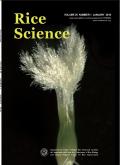Progress on Physiological Mechanisms of Rice Spikelet Degeneration at Different Panicle Positions Caused by Abiotic Stress
IF 5.6
2区 农林科学
Q1 AGRONOMY
引用次数: 0
Abstract
Rice yield is heavily reliant on the number of spikelets per panicle, a factor determined by the processes of spikelet differentiation and degeneration. In rice cultivars with large panicles, spikelet degeneration negates the advantages of large panicle and constrains yield potential. Environmental stress-induced metabolic disorders in plants aggravate spikelet degeneration, with the sensitive period for this process commencing approximately 15‒20 d before panicle heading. Notable positional variations occur within the panicle, with significantly higher spikelet degeneration rates at the basal than at the upper positions. An imbalance of carbon and nitrogen metabolism represents the primary physiological basis for aggravated spikelet degeneration under abiotic stress. Impaired carbon and nitrogen metabolism leads to disordered energy metabolism and disrupted respiratory electron transport, which accelerates the apoptosis of young spikelets through excessive reactive oxygen species accumulation. Sucrose serves as the main carbohydrate source for spikelet development, demonstrating an apical dominance pattern that favors spikelet formation. However, under abiotic stress, the inhibition of sucrose decomposition, rather than sucrose transport impairment, predominantly contributes to aggravated spikelet degeneration at the basal panicle positions. Brassinolide and auxin have a significant relationship with spikelet formation, potentially mediating apical dominance. Specifically, brassinolide enhances sucrose accumulation and utilization, thereby alleviating spikelet degeneration. At present, the mechanisms underlying rice spikelet degeneration have not been fully revealed, and the joint effects of hormones, carbohydrates, and carbon and nitrogen metabolism on this process require further investigation. To reduce the spikelet degeneration, the strategic application of water and fertilizer to establish a stable rice population can enhance the rice plants’ resilience to abiotic stress. An effective approach to reducing spikelet degeneration is to increase the dry matter occupancy of each spikelet during the panicle initiation period.
求助全文
约1分钟内获得全文
求助全文
来源期刊

Rice Science
Agricultural and Biological Sciences-Agronomy and Crop Science
CiteScore
8.90
自引率
6.20%
发文量
55
审稿时长
40 weeks
期刊介绍:
Rice Science is an international research journal sponsored by China National Rice Research Institute. It publishes original research papers, review articles, as well as short communications on all aspects of rice sciences in English language. Some of the topics that may be included in each issue are: breeding and genetics, biotechnology, germplasm resources, crop management, pest management, physiology, soil and fertilizer management, ecology, cereal chemistry and post-harvest processing.
 求助内容:
求助内容: 应助结果提醒方式:
应助结果提醒方式:


